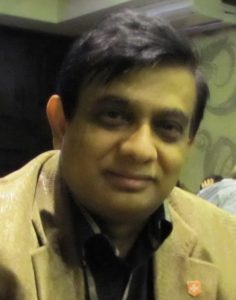
Shanti Jayasekera, PhD
The information society – is a theoretical concept of postindustrial society, the historical phase of possible evolution of civilization, in which information and knowledge are multiplied in a single information space.
The main product of the information society’s manufacture is information and knowledge.
One part of this process is increasing society computerization with usage of
T e l e v i s i o n.
Regular television broadcasts began almost simultaneously in three regions: in the United States in 1944, in France – in 1944. In England – in 1946 and in the Soviet Union – in 1945.
In other countries the emergence and development of television has already happened in the ’50s. Accordingly, three main models of social and economic organization of television were formed – an American, Western European and Soviet one.
In each of those models are solved key issues: who owns the television, who finances it, and whose interests it represents.
It is also important who controls it and how, what the relationship between the television and society, the television and culture, the television and the power.
A classical country of the commercial television is the USA.
All television in the United States is privately owned. Therefore, it obeys the laws of the market principle of competition, which forces broadcasters to be in constant search of new forms of television to keep viewers at their channel.
Competition dictates the orientation on the American television audience’s interest, high mobility, a focus on rapid development.
This orientation is defined in the programs of the most popular types of sights: the information and entertainment programs.
The entertainment programs of various genres are up to 70% of air time: these are movies, TV shows, games, shows, quiz and music programs.
Since the orientation on mass and accessibility requires a certain standard and “averaging” them to the level of the most common type of consumption – their intellectual and artistic value, is, as a rule, very low, but a professional level of these television programs is quite high.
In an American model of commercial television cultural and educational functions of television are in conflict with commercial objectives and are brought to the victim by them.
The state television is opposite to a commercial model.
This model of the TV has appeared during the spread of television in Western Europe. Such model is called in a different way: both the public and state, and public law and public.
In the public television various protective mechanisms are against market element and competitive activity, and most important – from the diktat of advertisers, orientated at tastes of averaged majority, which allows manufacturers to create cultural and educational programs, focusing on humanistic, universal values.
The third model of the television organization developed in the Soviet Union and was copied in the socialist countries of Eastern Europe. This was the same the state television, but the principles of construction were completely different.
This model is also called authoritarian. It is characterized by the state budget financing, strict ideological control and complete state monopoly on television.
The change in socio-political climate, development of new broadcasting opportunities – lead to the transformation of all three models: the commercial, public and state-monopolistic.
The changes in each of them had different reasons.
Commercial television in the United States, orientated on the mass audience, led to the individualization of demand. A lot of programs and channels are possible. This was facilitated by the development of satellite television and cable networks. Entertainment -, sport -, news -, movie -, baby -, family-TV channels constitute a large share of the USA television broadcast.
For the opportunity to watch programs on interests television viewers have to pay, by subscribing to one or another interest channel.
Such approach to television broadcasting led to the emergence of a new model –a marketing one, in which the determinant becomes a “minority”, and success depends on the amount of money, collected from the audience.
In the early ’80s American commercial television competes with European social and public broadcasters. A restructing of the European model of television in the direction of commercialization and deregulation is done, and social and governmental channels, not being able to compete with the commercial, had to resort to advertising as an additional source of funding.
Today, almost all European public channels (except BBC) use advertising. Thus, the commercialization of European television transformed the European model of public and state television in a new “hybrid” model, in which both public and private (pay) TV develop and compete with each other,.
A mixed model dominates on all the post-Soviet space.
This model, in spite of Americanization of television programs, is the most fruitful creatively. Competition between commercial and public-private TV enhances the dignity of each of these broadcasting models and aligns their shortcomings.
Television, in its technical capabilities, is far superior to other media. Consequently, it leads in the daily consumption of the information with the prevailing break-away from other channels – 97%.
The possibilities of radio and cinema were the basis for the specificity of the television. To transmit television signals via radio waves over long distances. It is a possibility of the radio. A sound and video on the TV screen (still picture) – are the possibilities of cinema.
On television can be organized operational programs from the place of events, which is an important advantage over the radio. It creates a “presence effect”, that provides stronger connections with the audience.
A significant place in the structure of television programs is occupied by television programs, recorded on tape. But the unity of the audiovisual media creates the same opportunities for perception of the audience, that the programs from the scene do.
If we consider the television audience as a collection of TV viewers in the specified limits, then you need to take into account the parameters of three kinds: social, spatial and demographic.
In any TV-viewers there is something, that unites the audience – a common language, culture, lifestyle, career interests, etc. If we consider individuals in the role of a TV viewer, then we must distinguish three things: the fact of turning on the TV, the fact of television viewing and the fact of using a particular program on a particular channel.
While viewing, a person can change the motivation and move on to watching other channels. This suggests that the TV audience – is a d y n a m i c s y s t e m, in which continuous changes happen on a micro-level with a high speed.
A significant number of the information sections is calculated once for all – on an average representative of the TV audience.
Information programs, entertaining and educational television are also aimed at the widest possible audience. In order to attract different groups of the audience to view the programs you can go on a “honeycomb structure” principle.
Potential audience of a TV channel can be considered all population, living in the zone of consistent reception of a television signal.
Changing of the TV audience is realized by methods of population survey in tote or particular groups in order to obtain both factual information, and the subjectivity of a program or a channel.
TV programs and program cycles has its audience. Mass programs must account on all groups of the audience. However, specialized audience has also the right to the special attention of some publication or program.
A specific analysis of attitude of the audience to the media can be examined through the line of selection of this information:
- The choice of information sources on central or local channels;
- The choice of particular programs on these channels;
- Evaluation of scanned material;
- The consequence of the information in the minds and behavior of information consumer.
It is believed, that the main functions and tasks of television are:
– Information (informing the population about events in the country and the world);
– Cultural and educational (education, dissemination of culture, promotion of knowledge);
– Entertaining (entertainment, recreation, emotional discharge);
– Educational (training of civilian attitudes and beliefs);
– Social integration and political mobilization (social cohesion, political activity).
All these tasks TV performs in every society, and in people’s consciousness of the modern society the main tasks of television stay: information, education and training of the population. The entertaining function is an additional one, but not the basic one.
References:
- The ABC of television. V. A. Sarukhanov, Moscow, Aspect Press, 2009.
- Television and us. V. Sappak, Moscow, “Art”, 2010.
- The role and place of television in the modern media scene. The Journal of SGKEU, 2010 № 2.

